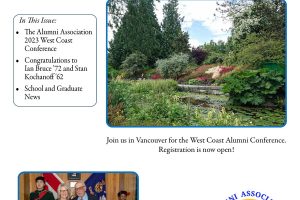
Leading With Landscape – Designing and Implementing Urban Ecologies
An audience of about 100 people, students, graduates, parks department people (including Steve Barnhart, Senior Director Parks, Environment & Culture for Niagara Parks), landscape architects, designers, and School staff heard a thought provoking and inspiring discussion from Michael Ormston-Holloway on Thursday, January 10th in Toronto at the Landscape Ontario Congress. The educational session was a collaborative venture by the Alumni Association and Landscape Ontario. Michael is the first speaker in an ongoing sponsored speaker series.
Michael Ormston-Holloway is proud to be involved in integrating landscape design with ecology to build better connections with people and nature. He has an ecology, design and teaching background. He started his career in the Smoky Mountains but now is back in Canada and works in downtown Toronto. Why work in an urban setting? Michael was trained initially as an arborist and he saw that there was a great need to help urban trees and because there are so few mature city trees – every city tree is critically important. During his first weeks on the job he noticed many challenges to city trees – co-dominant trunks, included bark, girdling roots, clay loam volcano mulches, and lots of antiquated tree planting practices. The need to help urban trees and overcome these challenges (and more) would become his mission.
A survey of City of Toronto trees found that the tree canopy had an astonishing number of young trees and very few mature trees. The survey showed 70% of trees were <15 cm DBH (diameter at breast height), 15% were between 16- 30 cm DBH, 8% were between 31-45 cm DBH, 4% were between 46-60 cm DBH and only 3% were >61 cm DBH. Michael emphasized the need to get our city trees to live longer. Michael offered some simple solutions to help urban trees – give tree roots air, remove compaction, lift pavers over roots, use permeable sidewalks, tag your own healthy trees in the nursery to get the best quality plants, plan for the ultimate size and tree form, and write planting specs that are detailed enough to produce a healthy tree but don’t cripple the actions of contractors. Always on the lookout to help urban trees, Michael shared, “I carry a folding pruning saw and secatures with me everywhere to help trees.” I expect to lose 10% of small caliper trees on any project. He had good success with moving large caliper trees to the centre of Goderich, Ontario for a project to replant after the town was decimated by a tornado.



